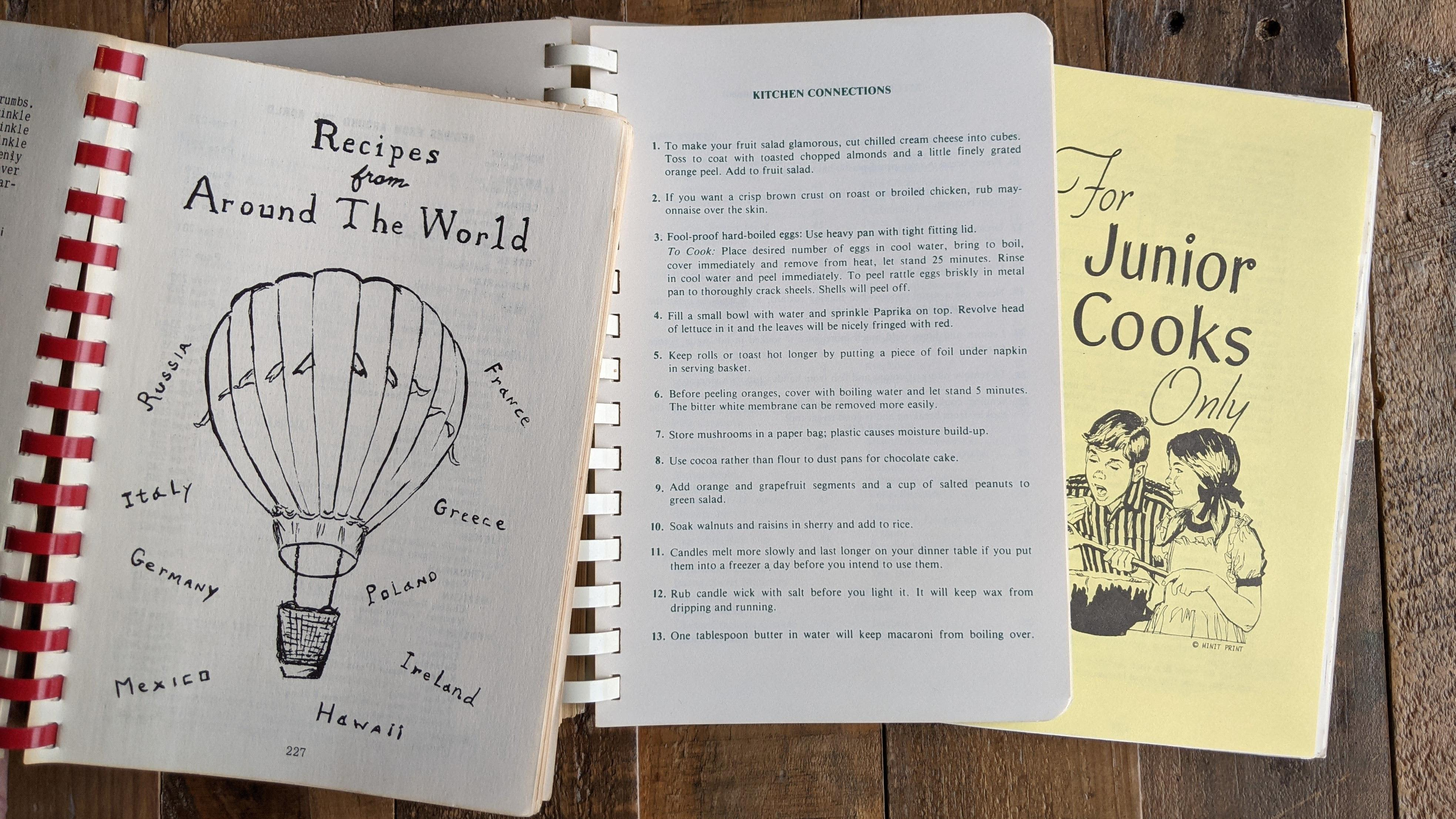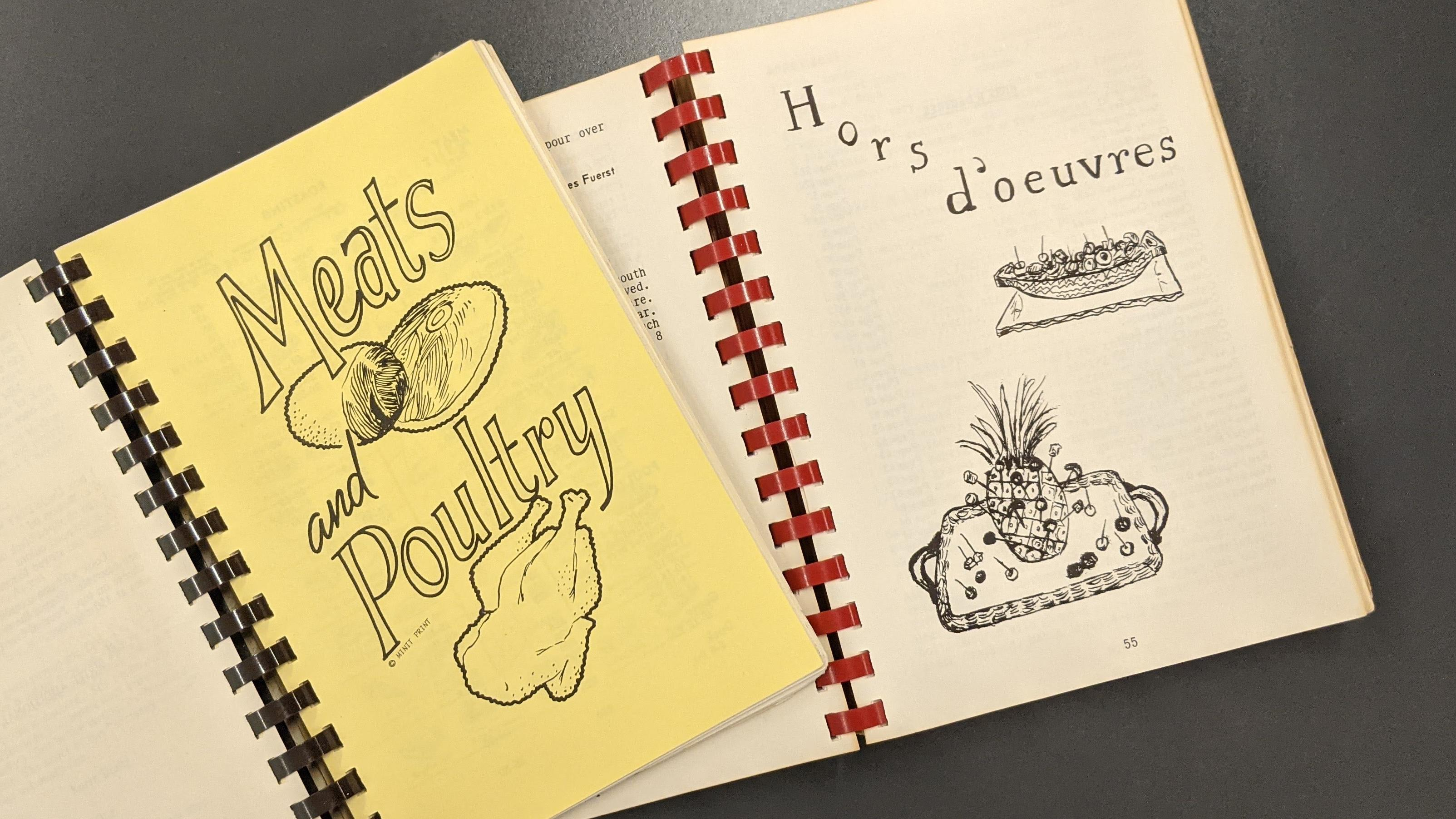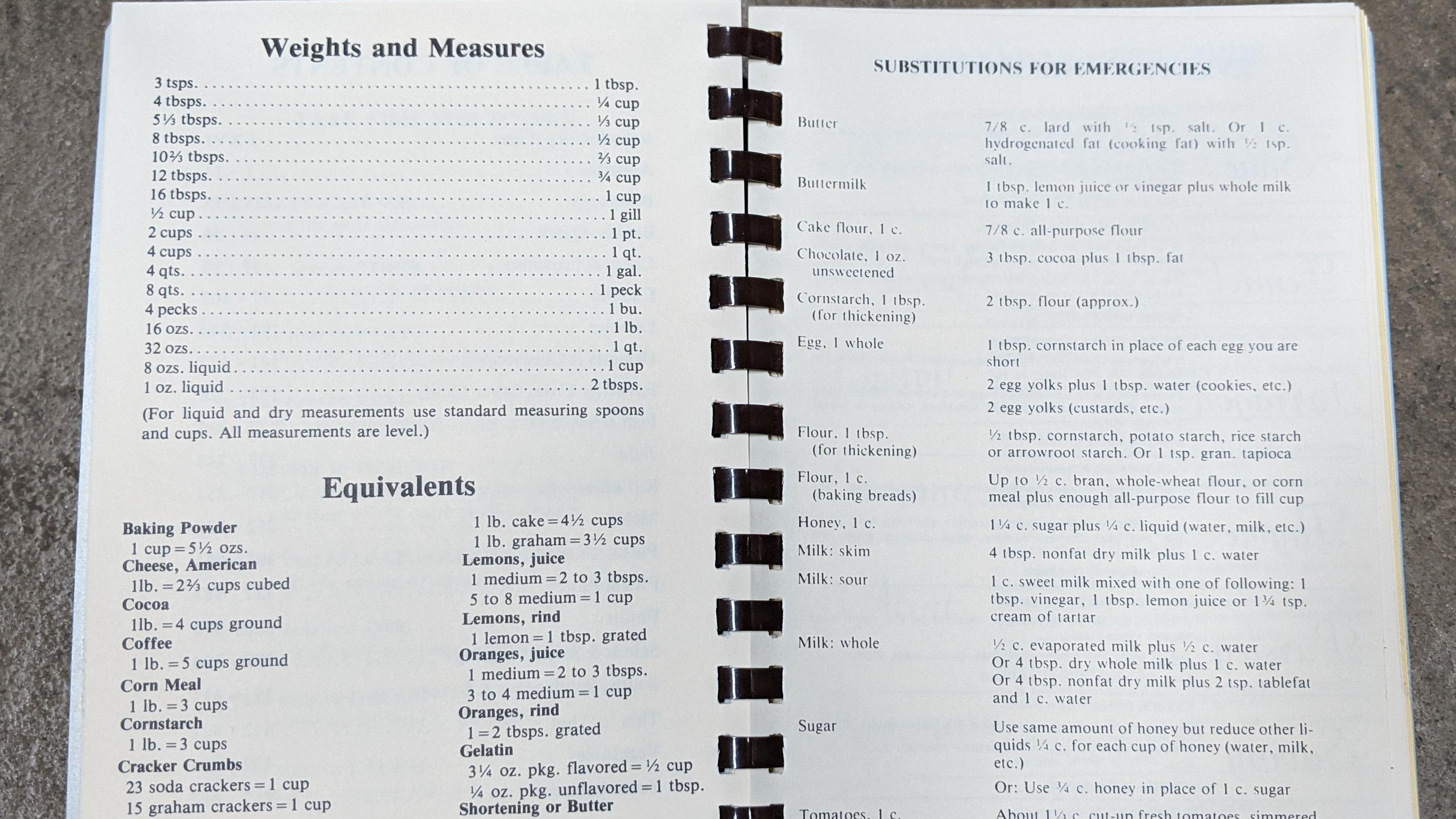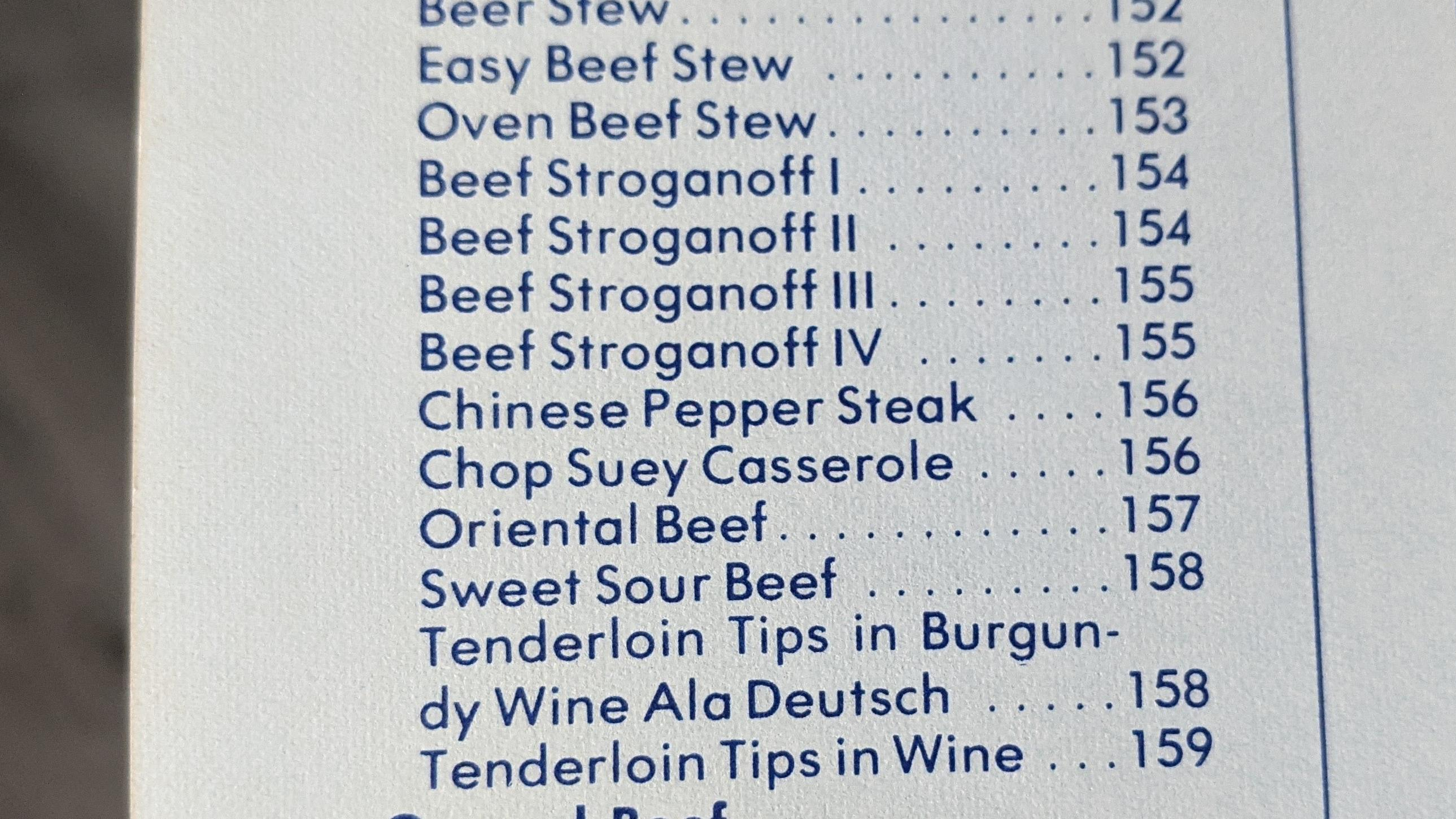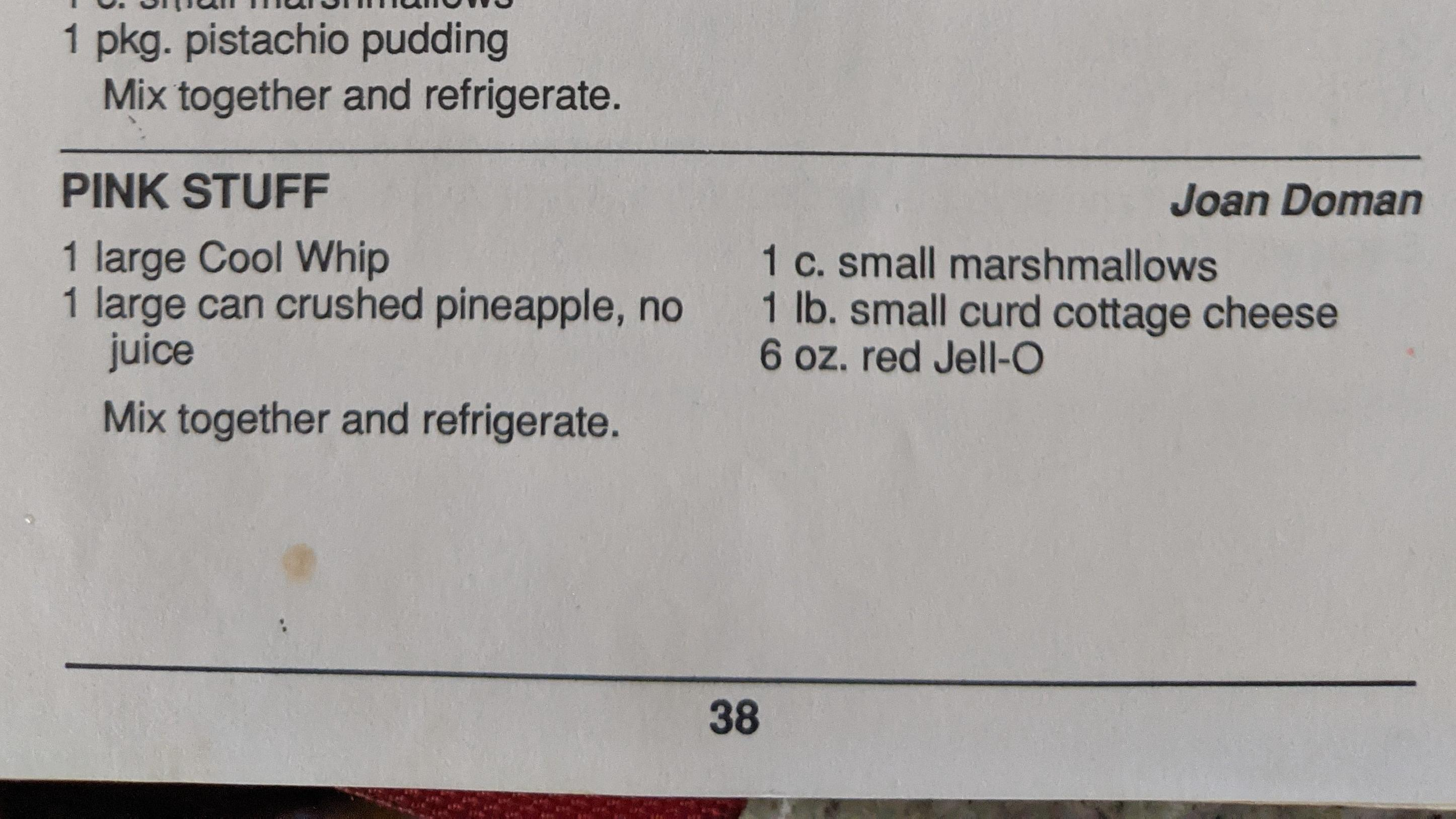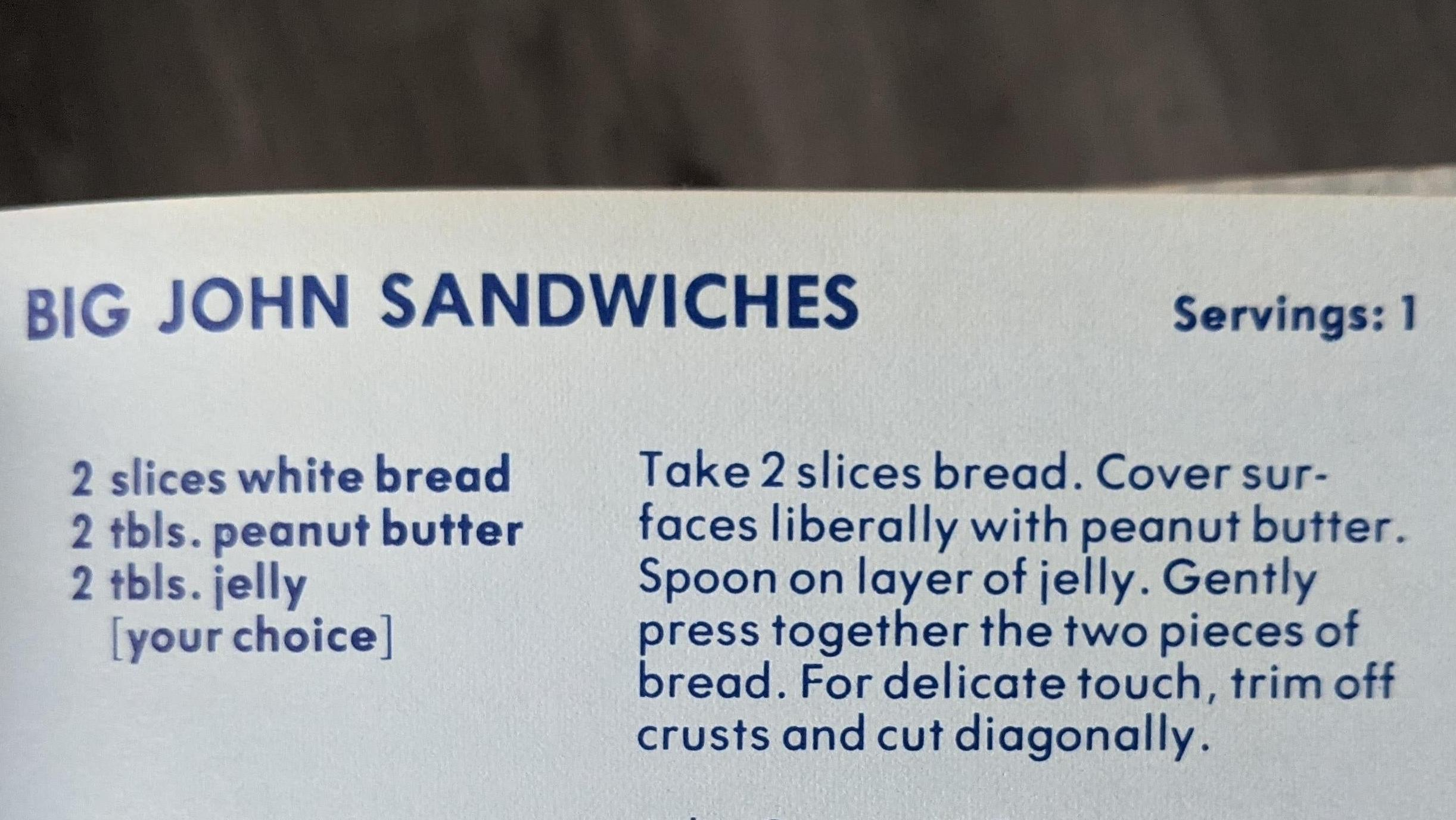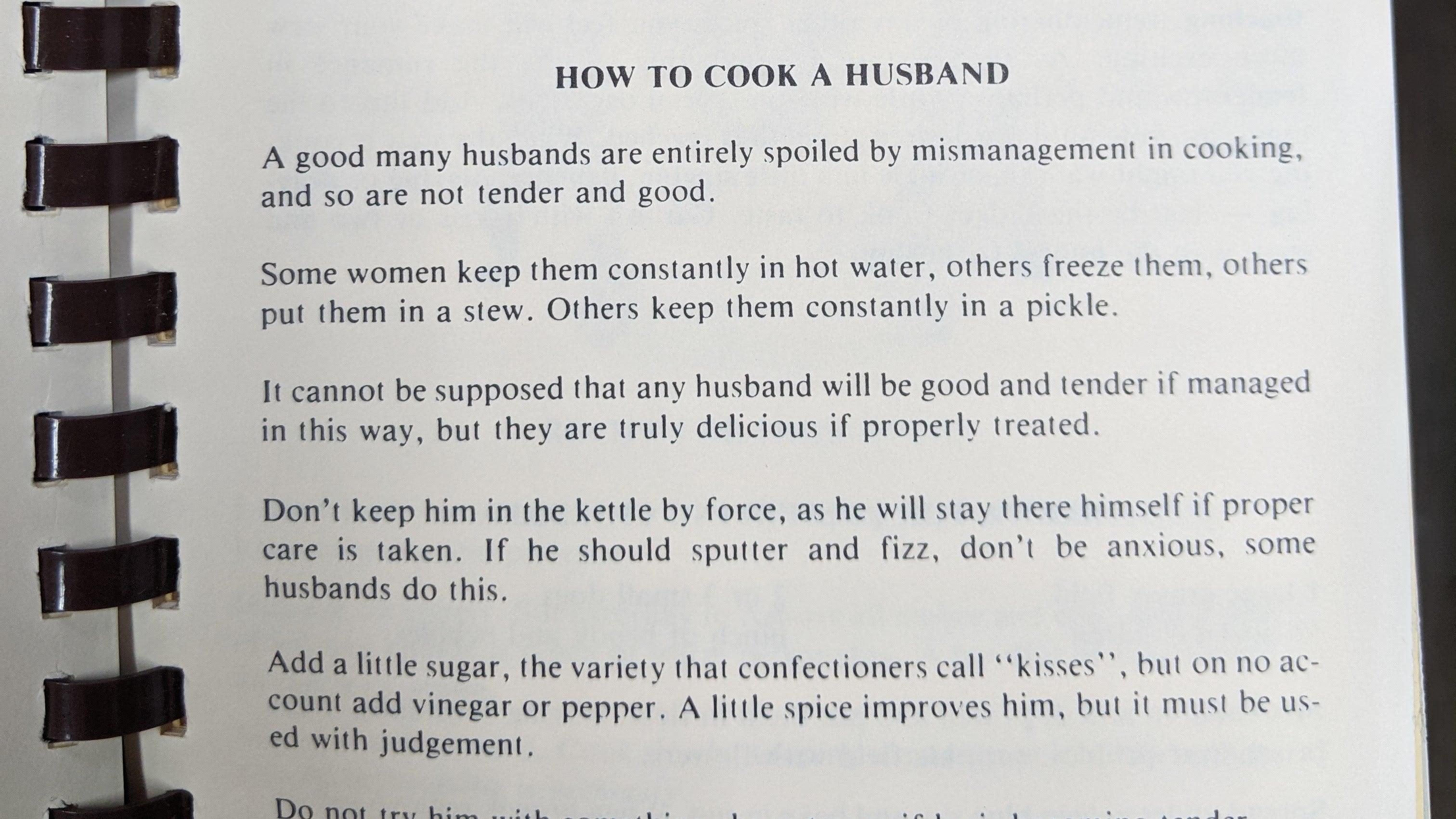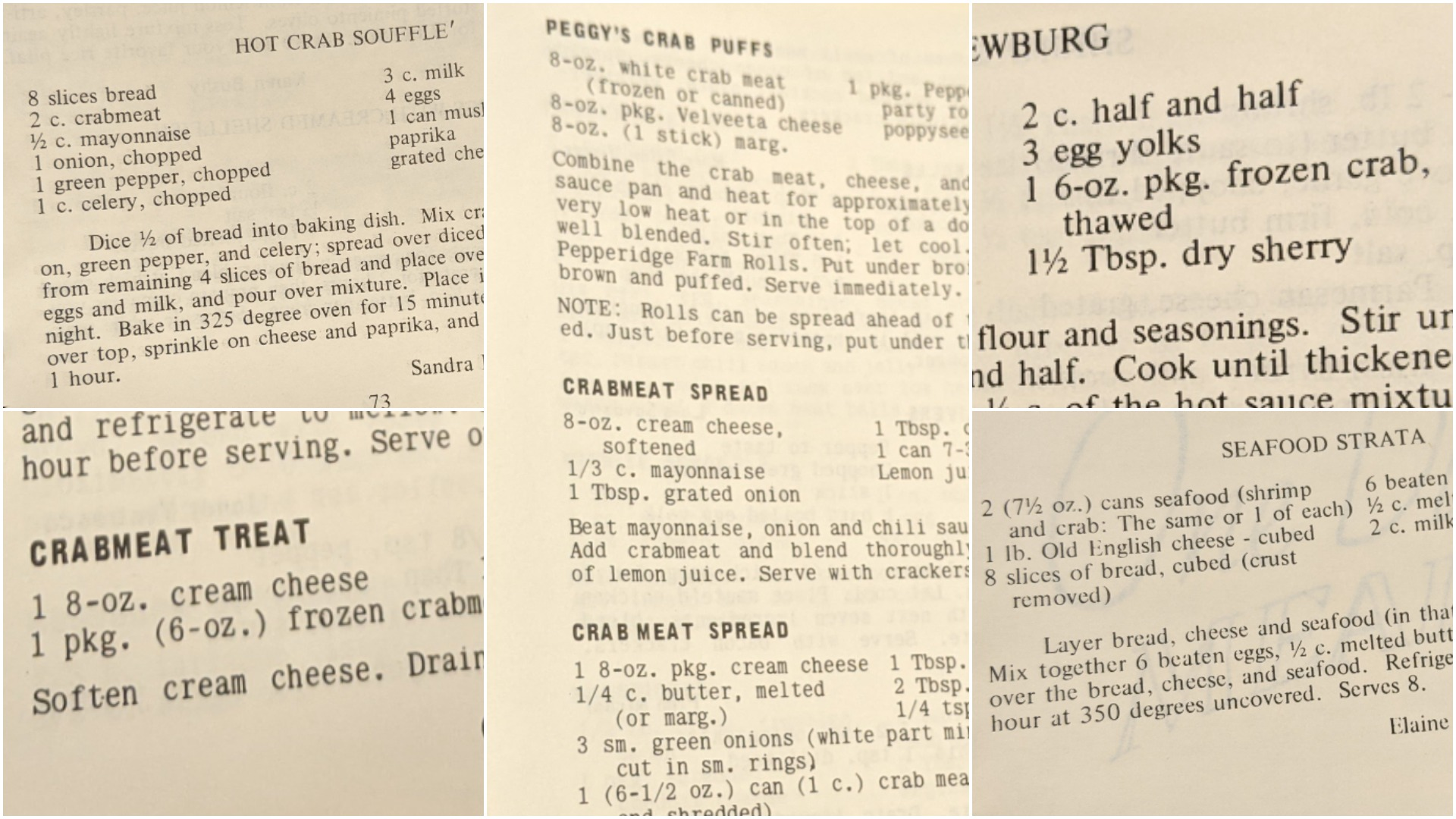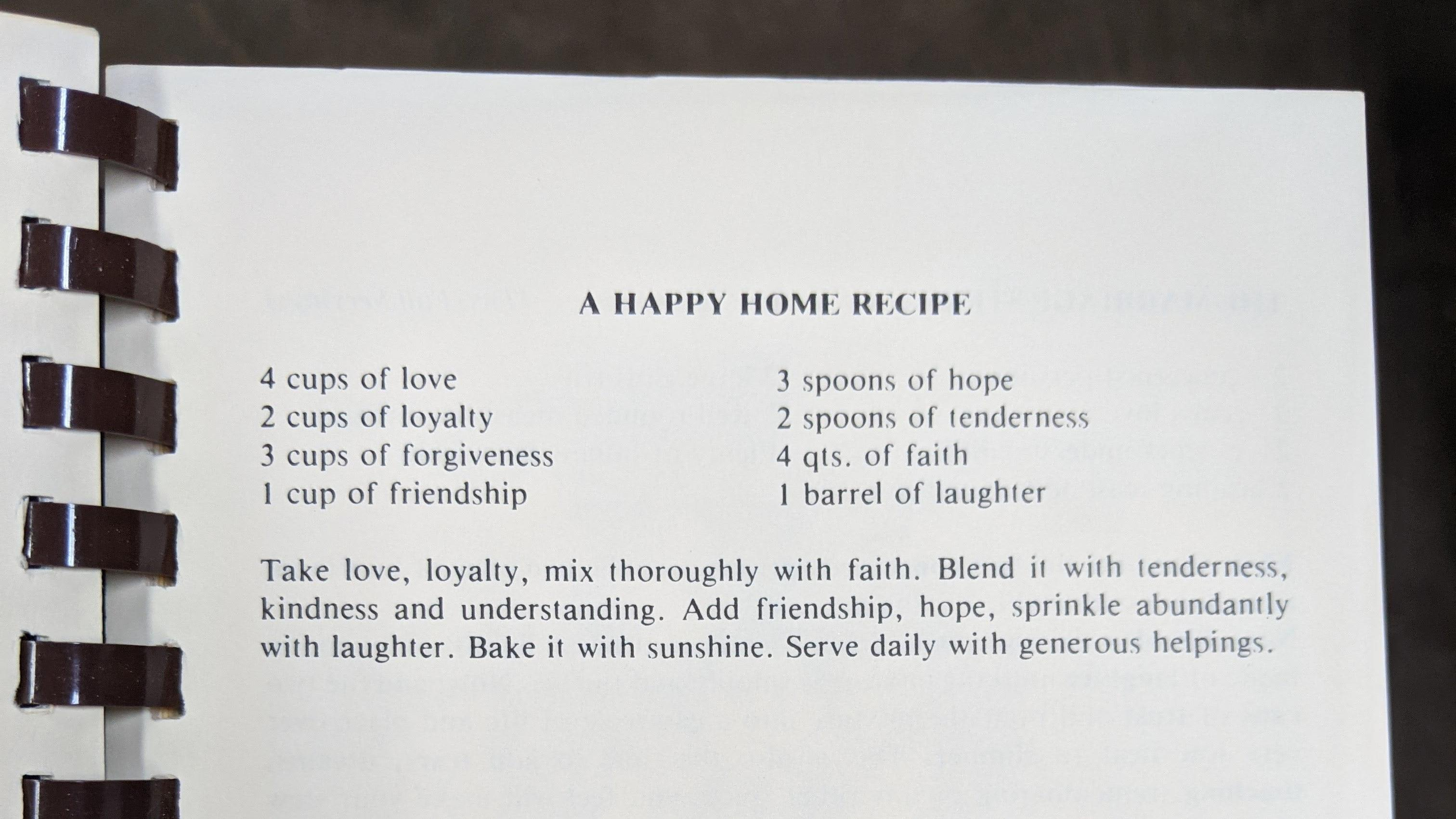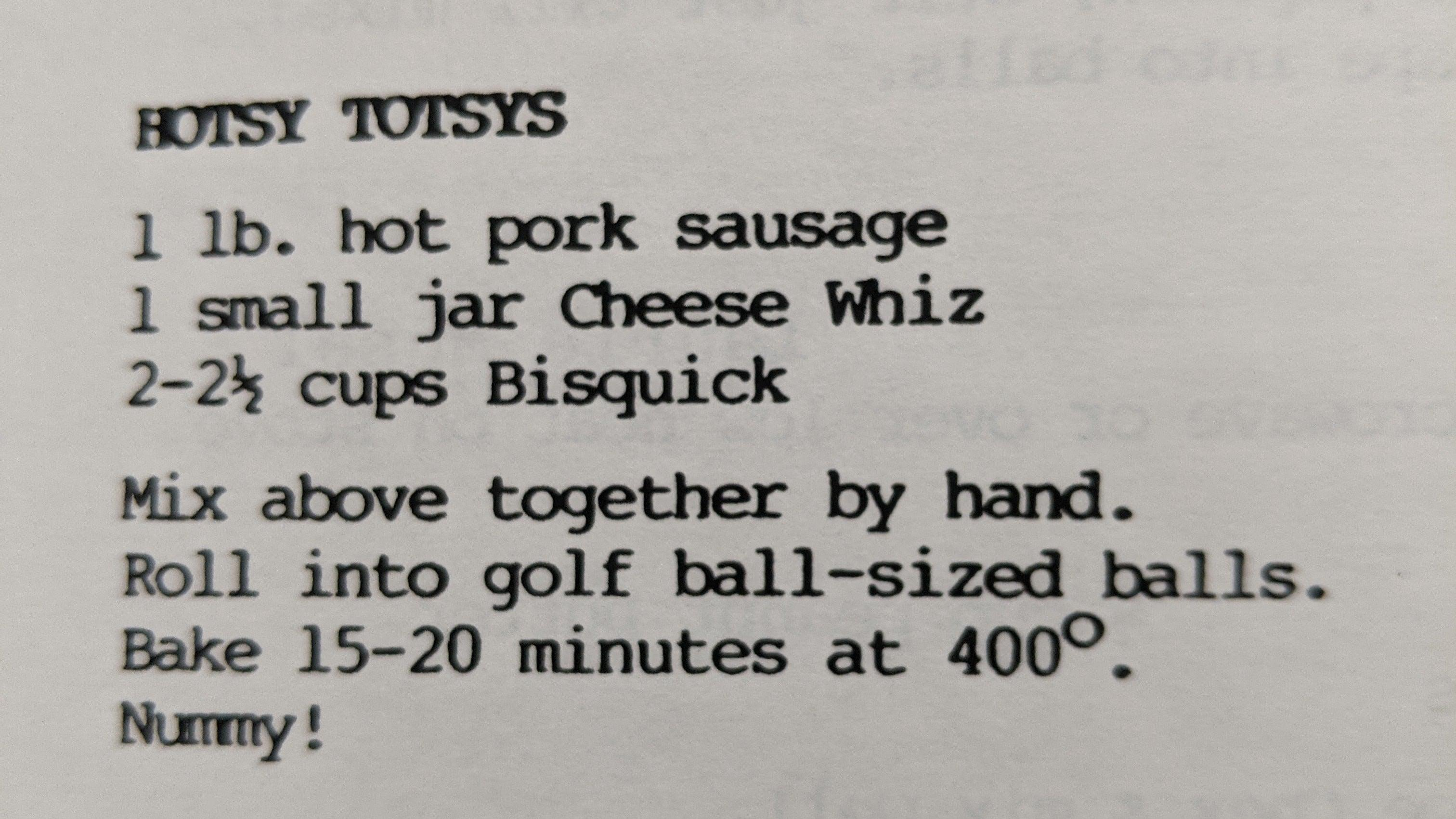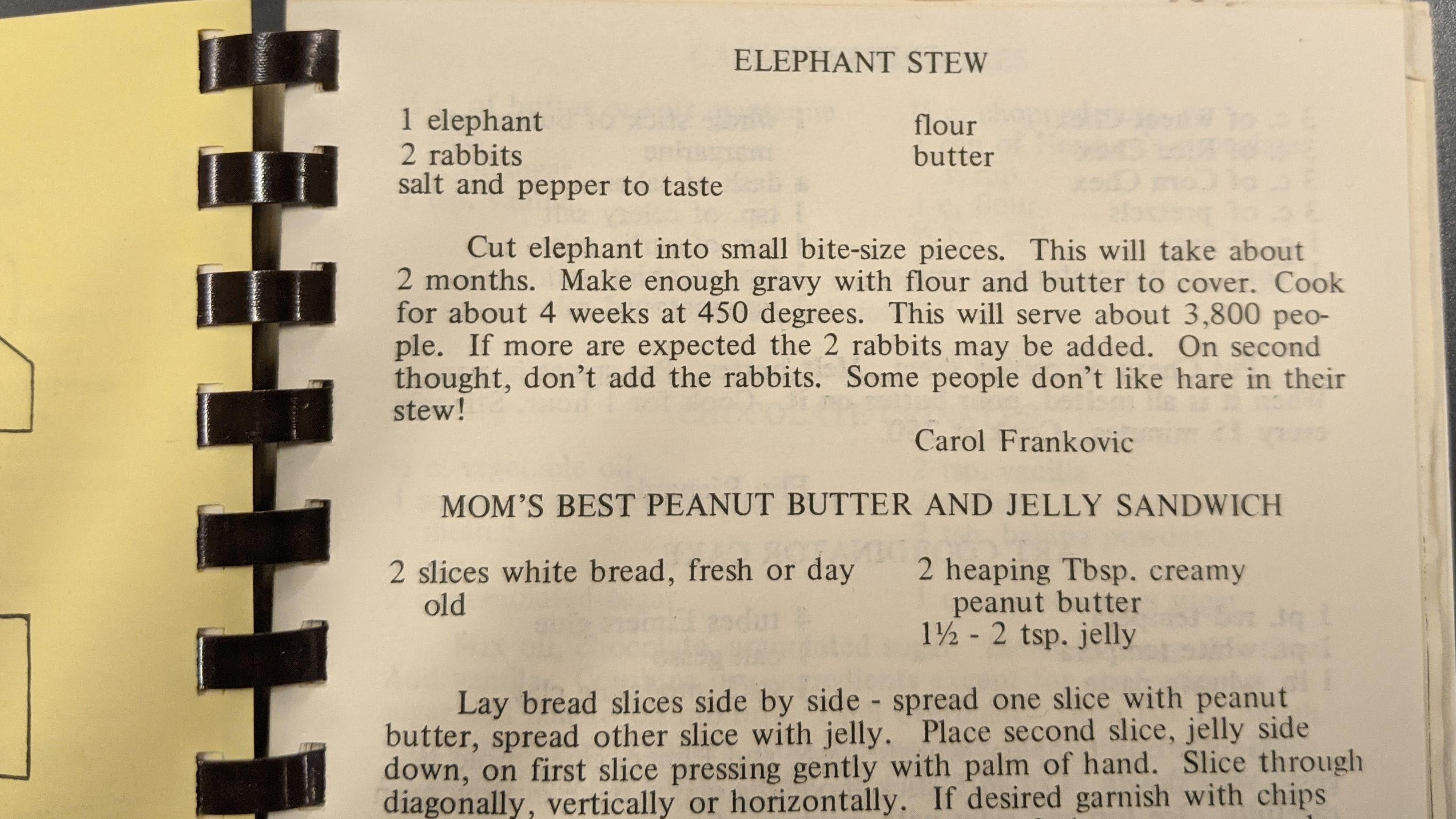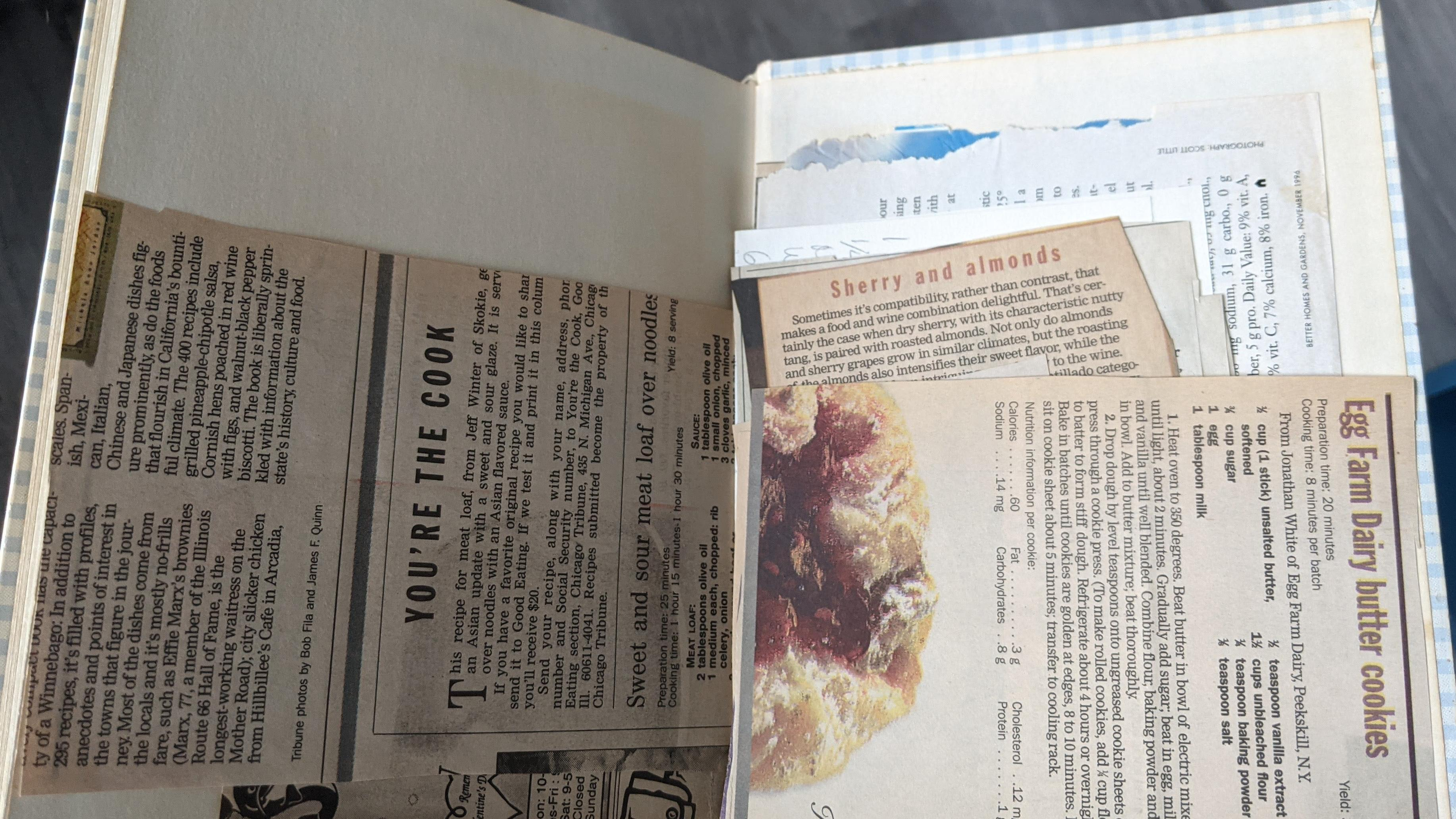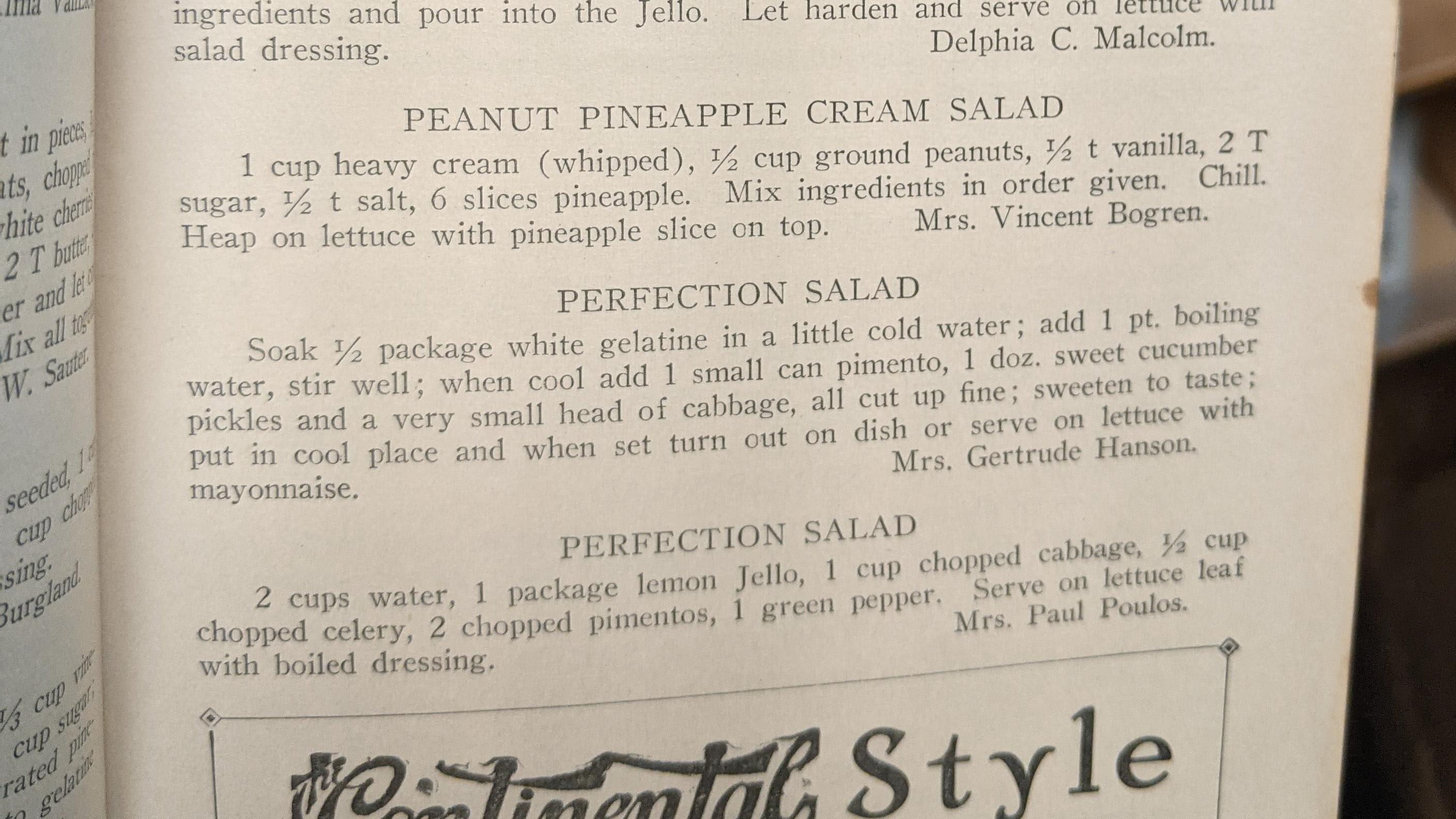12 Things You'll Find In Every Midcentury Church Cookbook
Community cookbooks are worth taking (way too close) a look at.
In the mid-20th century, church cookbooks from suburban parishes hadn't had time to develop the warm patina of kitsch and nostalgia with which they're positively coated now. Back then, these comb-bound collections were the indispensable tools of a busy household, their proceeds raising funds for community causes while their parishioner-submitted recipes taught young mothers how to feed upwards of a dozen mouths as efficiently as possible.
Page through enough church cookbooks and you'll start to notice a pattern—a set of criteria that each quality collection must meet for maximum delight. What follows is a list of attributes that you'll find in any church cookbook worth its salt. Look for these qualities in any 75-cent volume you encounter at the thrift shop to ensure you've found something truly special.
Unappetizing illustrations
Local parishes would never spring for glossy photo printing—these cookbooks are a fundraising tool, after all, and the lower the cost, the higher the proceeds. Instead, thick-lined, stamp-like illustrations often accompany each section of the cookbook; whether they were designed in-house or selected from some rudimentary clip art database, I've never been able to determine. The line-drawing style lends itself well to things like buttercream cakes and cookies, but dishes with more detail, like poultry and fish, tend to come out looking hairy and lumpy. None of it is appetizing, and all of it is delightful.
A handy list of ingredient substitutions
It seems that most church cookbooks begin with a predetermined page count (as quoted by the printing company), which, depending on how many recipe submissions are solicited, then gets filled in with as much front and back matter as needed. Some of this back matter involves useful cooking conversions, like weight-to-volume measures and how to substitute for buttermilk. In an era before search engines, these cookbooks aimed to be everything our kitchens needed—at least, as much as the page count would allow.
Far more recipes for beef stroganoff than necessary
You can just picture it, can't you? The cookbook committee sifting through a mountain of beef stroganoff recipe submissions to find literally a single distinction between them? Evidently, any possible process of elimination proved futile once the committee realized it might hurt parishioners' feelings if their particular beef stroganoff recipe wasn't included alongside the rest. So, in they all went, with varying degrees of instruction, ready to feed an army as any good church cookbook recipe can.
Something that uses cottage cheese in a way it shouldn’t
You will hear no complaints about cottage cheese here at The Takeout. In our opinion, it is a perfect and versatile food. Still, there are applications of cottage cheese we simply cannot condone, and 100% of them are tucked away inside church cookbooks. Take "Pink Stuff," for example, which combines cottage cheese (classic!) with pineapple (not my favorite combo, but kitschy!), Cool Whip (wait, what?), mini marshmallows (hold on what's happening), and red Jell-O (oh no). Cottage cheese, like slices of hard boiled egg, tastes best when it stays in its own lane. Then again, Joan's probably done more cooking than any of us put together, so maybe she knows something we don't.
A joke recipe that some guy named Big John slipped into the collection
Back in the 1950s, you had to watch out for the antics of a guy named Big John. There was a Big John in every community, known to all as a big, friendly guy as quick with a joke as he was with an invitation to join him and The Wife for bridge in his rumpus room. When Big John catches wind of the church cookbook submission drive, he gets a twinkle in his eye and submits recipes for things like peanut butter on Wonder bread. Or maybe "Big John's Heavenly Nectar," a "recipe" that just involves cracking open a bottle of Budweiser. Big John, you slay us! Will your jokes ever cease?
Stuff that hasn’t aged well
The less we say about this hilarious gag, the better. Moving on.
Just an unimaginable amount of crab meat
Crab meat is nutritious, versatile, easy to prepare at home, and can make any occasion feel 20% fancier, so it's no surprise that resourceful homemakers turned to crab for a variety of dishes. The reason these recipes might feel more kitschy now might have nothing to do with the crab, but rather the liberal use of cream cheese and Velveeta, both of which are unfairly maligned in the decidedly cheffy modern era.
A rather pedantic recipe for “a happy home”
The church VIPs—pastors, sisters, deacons, pretty much anyone with an anachronistic uniform—were typically invited to submit recipes to the cookbook collections, too. However, the bachelor life mandated by priesthood means that instead of supplying useful cooking advice, many members of the clergy took it as an opportunity to wedge a sermon in there, right between Crabmeat Treat and Ambrosia Salad. Like a soufflé, the metaphor often falls apart somewhere in the middle, but we appreciate the gesture all the same.
Recipes with almost no instruction whatsoever
When asked to submit their most tried-and-true recipes, many parishioners go with the ones they know best. But that means the dish lives more in their mind than on a recipe card. Consequently, the instructions provided to the church cookbook might be inscrutably sparse, using terms like "some" and "a few" rather than particular measurements and instruction.
Or maybe these recipes leave you in the dark on purpose so that nobody but Elaine From Down the Block can master the art of a perfect Jell-O salad.
A really inscrutable children’s section in the back
These cookbooks are fun for the whole family! As long as, you know, your kid doesn't confuse the recipes for actual food (cookies, wacky cake) with the ones for non-edible craft material (corn starch stress balls, oatmeal play-doh). Which is asking a lot, considering the recipes are placed side-by-side. There are even joke recipes that are more like imagination exercises (see above), which perhaps more adult cookbooks should contain. Wouldn't it be fun to turn the page not knowing if you were about to find tasty appetizers or long joke setups?
A bunch of other loose recipes jammed into the back cover
If you have a better idea for where to store all those newspaper clippings, I'd love to hear it.
The dessert you’ll make the rest of your life to rave reviews
For all the fun we like to poke, these cookbooks really will instill the fundamentals in a way that more refined collections aren't always designed to do. Practicality, resourcefulness, how to wring 75 different recipes from a can of Cream of Mushroom soup—these are all valuable lessons, and in the case of community cookbooks, those lessons are being handed down not by stuffy chefs or streamlined professionals, but by the people right in your neighborhood. People with the same size kitchen as you, with access to the same grocery store and with the same constraints on their cooking time. Is it any surprise that the dessert their kids love most will be the one that pleases your crowd, too?
